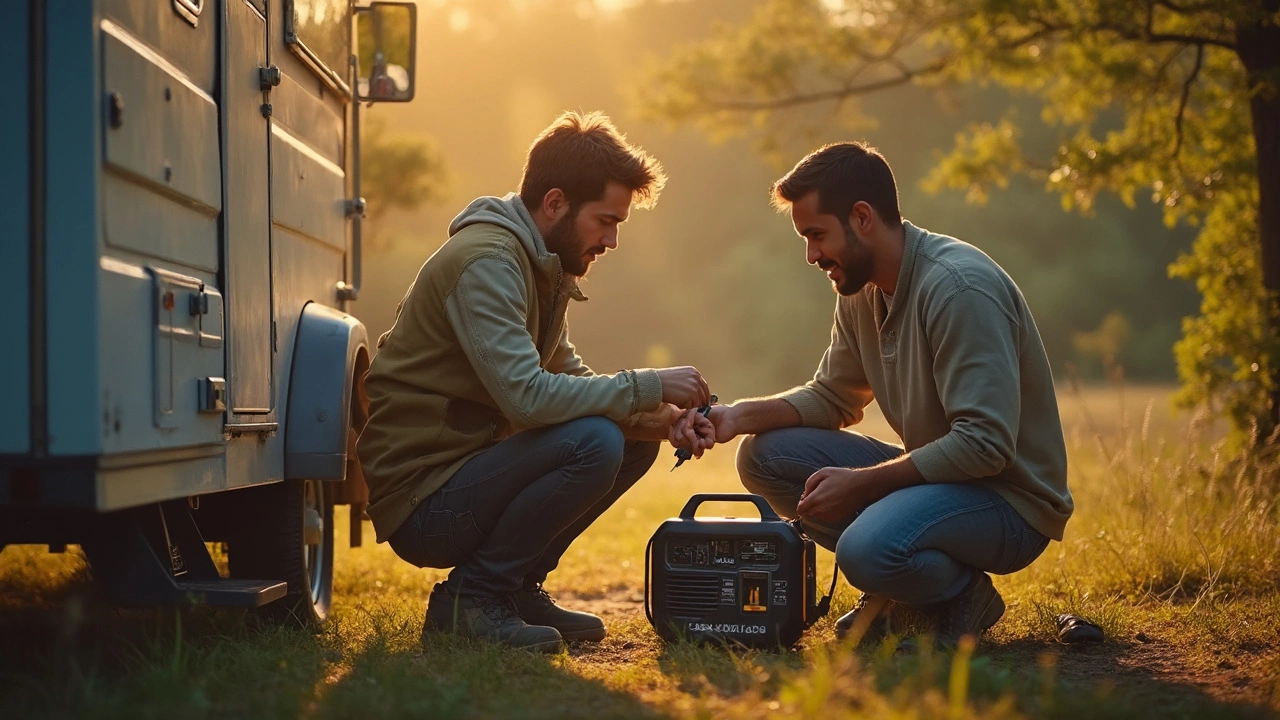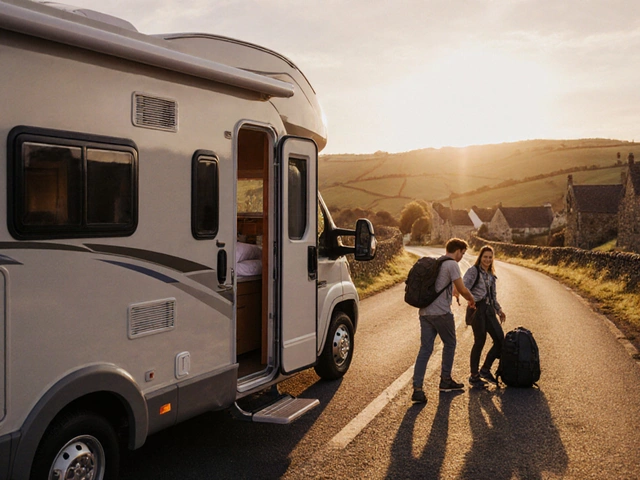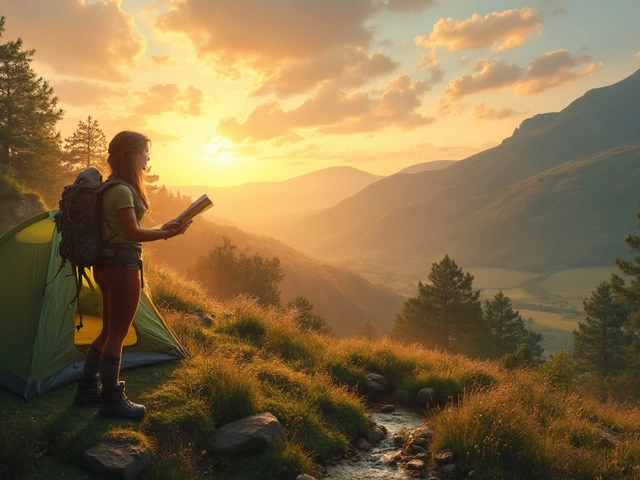So, you're heading out for some boondocking and wondering how to keep your phone charged, huh? Let's not beat around the bush—electricity is a hot topic for those venturing off-grid. Why settle for a dead battery when you can stay connected to the world, even from the middle of nowhere?
First thing's first, let's talk solar panels. They're not just for rooftops anymore. Pop a portable solar panel in your trunk, and you've got yourself a handy power source. Perfect for charging your batteries or running small appliances, especially when the sun's having a good day.
- Understanding Boondocking Basics
- Solar Power Adventures
- Generator Know-How
- Batteries and Alternative Solutions
Understanding Boondocking Basics
Boondocking—sounds pretty adventurous, right? But what exactly is it? At its core, boondocking is all about camping off-the-grid, far away from the comforts of paid campsites. No standard conveniences like water, electricity, or sewer hookups. Simply put, it's you, your gear, and nature.
Why do people choose it? For starters, it's free or nearly free. You get to camp in stunning, remote spots that typical RV parks can't offer. The thrill of being self-sufficient and truly connected with nature draws many.
Legalities and Locations
Before you pack your things, remember: not every spot is open for boondocking. You’ll want to look for areas where dispersed camping is legal. In Australia, many national parks and state forests allow it, albeit with specific guidelines. It's crucial to check with local authorities or online resources about where you can pitch your tent or park your RV legally.
Basic Gear and Preparations
Going off-grid doesn't mean going unprepared. Here's what you'll need:
- Water tanks and filters: Clean water is a must. Consider portable filtration options.
- Power reserves: Solar panels or a small generator can provide energy, while battery banks hold an extra charge for gadgets.
- Waste disposal solution: A solid plan for trash and waste is essential. Leave no trace behind.
A little planning goes a long way. You want to enjoy the freedom without the stress, after all.
Expert Tips for a Memorable Experience
Start with short trips to get the hang of it. You'll quickly learn what you need to be comfortable. Chat with other boondockers online—many folks out there are eager to share their expertise. Most importantly, be flexible. Nature can be unpredictable, and having a positive mindset helps tremendously.
Solar Power Adventures
When it comes to boondocking, solar power is like the cool new kid on the block, and for a good reason. It's not just about reducing your carbon footprint; it’s about practicality too. Imagine camping out in a remote location, no hookups in sight, and still having a fridge humming away.
Solar panels have come a long way. Nowadays, they come in lightweight and flexible panels that roll up into a small package—perfect for stowing away when not in use. Brands like Renogy and Goal Zero have really upped the game with portable kits that can transform sunlight into usable watts in no time.
The Basics of Setting It Up
Installing solar panels might sound like rocket science, but it’s really just a bit of DIY. First, you need to pick the right spot with plenty of sun exposure. A south-facing position is usually a good bet in the Southern Hemisphere.
- Unroll and position your panels to catch the maximum amount of sun.
- Connect them to a charge controller—this baby keeps your battery from overcharging.
- Wire the controller to a deep-cycle battery and voilà, you're off-grid with a steady power trickle.
Powering Your Gear
With your setup in place, you can power a variety of devices. Most boondockers use DC appliances and gadgets that run directly off their 12V battery setup. You can use an inverter to power AC appliances if needed, but remember that they're less efficient. It's all about finding what works for your needs.
“Solar power throws open new doors for extended camping adventures without reliance on conventional hookups. Our users have found it pivotal in their exploration quests.” – EcoCamping Review
Don’t forget the math. You’ll need to match your energy needs to your setup’s capacity. Typical small setups can generate around 100 watts per panel under optimal conditions, which might power up lights and charge small electronics. More extensive systems can handle larger appliances.
| Solar Panel Type | Average Power Output (Watts) | Ideal For |
|---|---|---|
| Flexible Panels | 50-100 | Beginners and those with modest power needs |
| Portable Fold-Out Kits | 100-200 | Intermediate users needing power for longer stays |
| Large Fixed Panels | 200+ | Veteran boondockers with high power requirements |
So, whether you want to keep your phone alive or run your travel fridge, going solar might just be the best choice. It's an adventure in its own right. Plus, there's something rather satisfying about harnessing the sun’s energy while sipping your coffee under its rays.

Generator Know-How
Alright, let's get into generators. These bad boys can be your best friend if the sun isn't shining, or if you're just looking for a bit more juice. But here's the deal—picking the right one can be a bit tricky with all the options out there.
Choosing the Right Generator
When it comes to boondocking electricity, size matters. A small, portable generator like a 2000 watt will generally do the trick for charging electronics and running a few appliances. But if you're bringing a portable fridge or heater, you might need something beefier.
- Check the wattage: Make sure the generator can handle whatever you're plugging in.
- Noise levels: Compact generators can be surprisingly quiet, which is great because nobody wants to scare off the wildlife with a loud rumble.
- Fuel type: Gasoline is common, but propane options are available—each has its pros and cons depending on availability and cost.
Usage Tips
Once you've settled on the right fit, using your generator wisely is key. Here are a few tips:
- Always run it outside in a well-ventilated area to avoid carbon monoxide buildup.
- Invest in high-quality extension cords to ensure efficient power transfer.
- Keep a couple of extra fuel cans handy, way easier than pushing limits.
If you're concerned about power efficiency, a neat trick is to operate sensitive electronics through a power inverter, ensuring a smooth power supply.
Trust me, once you've dialed in the right setup, you'll wonder how you ever camped without one!
Batteries and Alternative Solutions
When you're boondocking, having a dependable battery setup can make a world of difference. It's not just about keeping your phone alive—it's about running the essentials, like lights and maybe even a fan on those warmer nights. Let's dive into how batteries can save the day.
Battery Basics
First up, the trusty deep-cycle battery. These are designed to provide steady power over a long time, unlike your car battery which prefers short bursts of energy. Look for options like AGM or lithium batteries. Though lithium batteries are a bit pricier, they last longer and swallow an impressive amount of power, ensuring your gadgets stay up and running.
Inverter Essentials
Having a powerful battery is just part of the story. To use your standard plug-in devices, you'll need an inverter. It converts the battery's DC power into AC power. Keep an eye on the wattage and make sure your inverter can handle the load you plan to draw, so nothing conks out just when you need it.
- Opt for a pure sine wave inverter for more sensitive electronics.
- Calculate your power needs beforehand to select the right size.
Alternative Energy Sources
Now, what about when you've maxed out your batteries? Here's where some alternative methods come into play. Consider adding a small wind turbine to your kit, especially if you're camping in breezier spots. A bit unorthodox, but it can be a game changer when solar just won't cut it.
Another handy trick is to bring along a pedal generator. It might sound old-school, but it's effective. Pedal for an hour and you’ve got enough power to charge a tablet. Talk about combining exercise with utility!
All in all, combining solar panels, a solid battery system, and unique alternatives can keep you sufficiently powered during your next boondocking adventure. You’ll have everything you need without being tethered to a traditional camping power solution.






